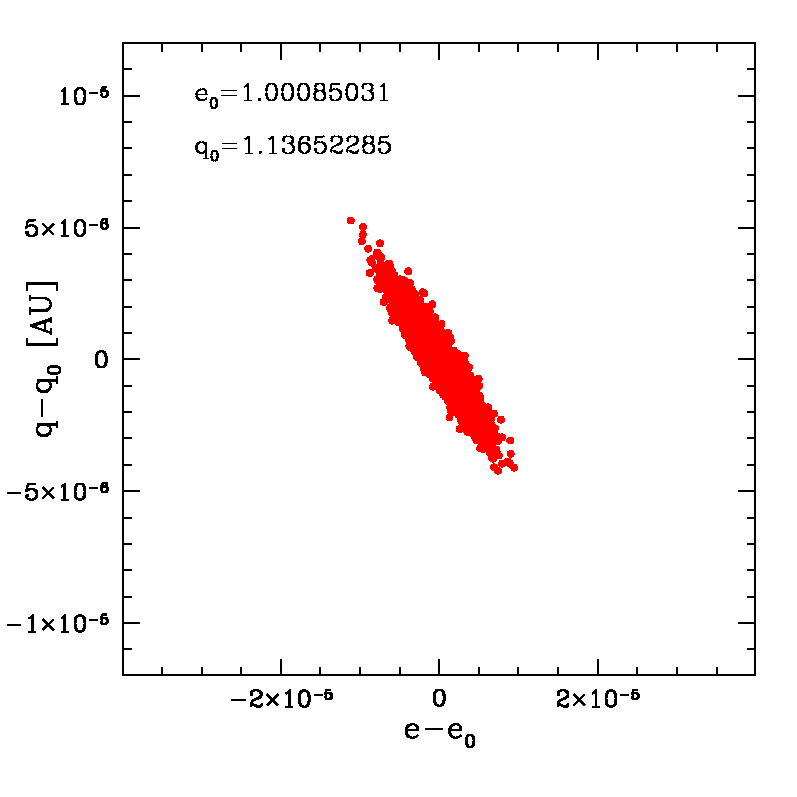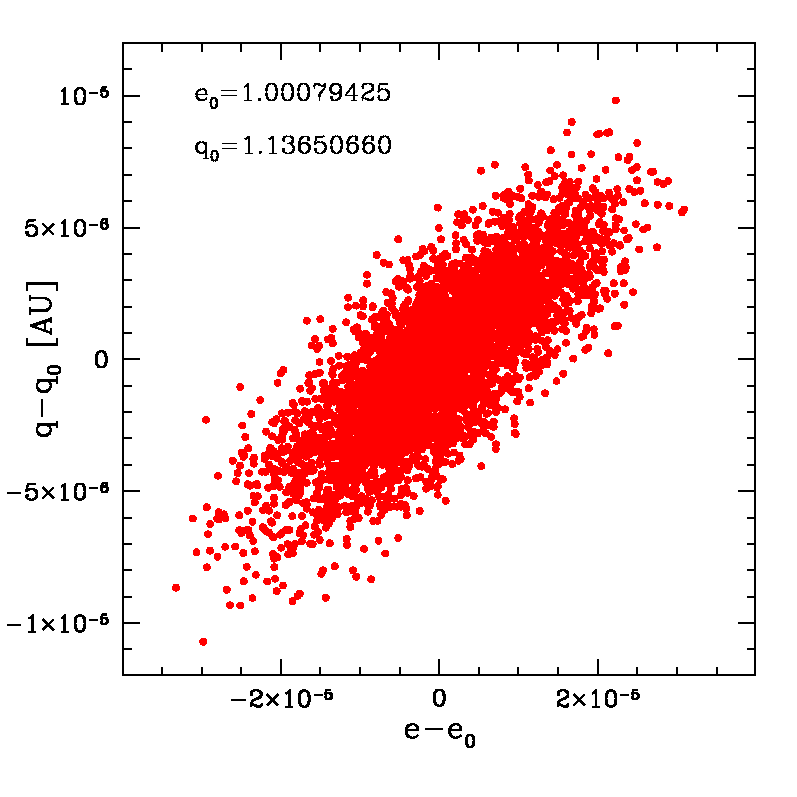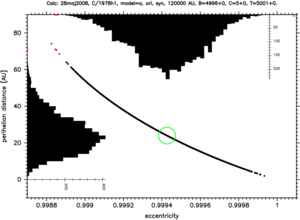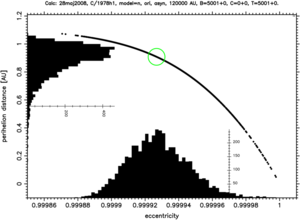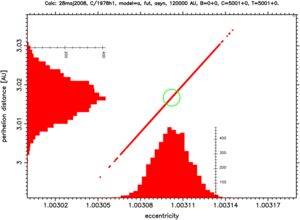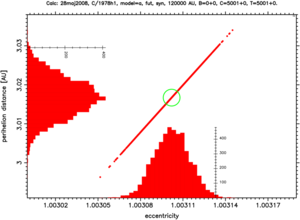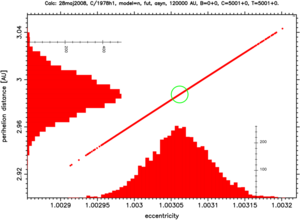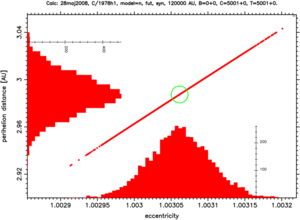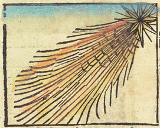Nongravitational nominal solution
Obs. arc: 1978 04 28 - 1979 12 09 Number of obs: 287 RMS: 1.00 arc second, (565 residuals used, 4.9% rejected residuals)
Heliocentric osculating orbit
Epoch Perihelion time q e ω Ω i
1978 11 28 19781111.408775 1.13650660 1.00079425 231.401425 349.344859 43.761723
±0.000236 0.00000288 0.00000972 0.000104 0.000060 0.000084
NG parameters:
A1= (1.2917 ± 0.1982) 10-8 AU/day2
A2=(0.41506 ± 0.12476) 10-8 AU/day2
A3= 0 (assumed)
Barycentric nominal original orbit (at 250 AU from the Sun)
Epoch Perihelion time q e ω Ω i
1679 08 07 19781110.596515 1.12973415 0.99990900 231.440876 350.248621 43.766722
±0.000480 0.00000614 0.00001212 0.000543 0.000065 0.000086
1/aori = (+80.55 ± 10.73) 10-6 AU-1
Barycentric nominal future orbit (at 250 AU from the Sun)
Epoch Perihelion time q e ω Ω i
2266 07 01 19781110.554368 1.14083841 1.00116958 231.488113 350.041308 43.684111
±0.000446 0.00000560 0.00000931 0.000411 0.000058 0.000085
1/afut = (-1025.19 ± 8.15) 10-6 AU-1
In the 17th edition of the Catalogue of Cometary orbits (2008):
Gravitational orbit (238 obs.) with 0 < 1/aori < 10-4 AU-1 - original barycentric orbit from the Oort spike.
The same comet in some other internet sources:
More details
Starting swarms of VCs...(heliocentric, osculating orbits)
Original and future orbit at the 250 AU from the Sun.
Comet number 9 in the Table: Nongravitational Oort spike comets (26 objects)
| Name | GR (1/a)ori [10-8 AU/day2] | GR (1/a)osc [10-8 AU/day2] epoch [TT] | GR 1/afut [10-8 AU/day2] | RMSGR [arcsec] | NG (1/a)ori [10-8 AU/day2] | NG (1/a)osc [10-8 AU/day2] epoch [TT] | NG 1/afut [10-8 AU/day2] | RMSNG [arcsec] | NG parameters A1 A2 A3 [10-8 AU/day2] tau shift [day] | |
| 9 | C/1978 H1 Meier weighting | +23.79 ± 2.42 | -748.17 ± 2.40 1978 11 28 | -1028.68 ± 2.42 | 1.04 | +80.55 ± 10.73 | -698.85 ± 8.55 1978 11 28 | -1025.19 ± 8.15 | 1.00 | 1.292 ± 0.198 0.4151 ± 0.1248 |
Note: in the following plots black denotes returning clones while red denotes escaping ones.The nominal solution is located at the center of the green circle. Each plot have a header where date of calculation and some other parameters are coded. Also numbers of returning (B=shown+omitted), escaping (C=shown+omitted) and all (T=shown+omitted) Vcs are shown.
Past orbit, at previous perihelion for the returning VCs :
Future orbits, at the escape border (no returning VCs) :
